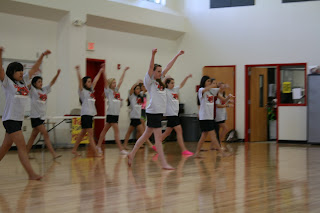Last Thursday the photojournalism class walked the halls of Memorial, snapping away. We tried to integrate some of the new photography techniques we'd learned in the days before hand. These said techniques include the following:
Composition Techniques
- Angels- a way to increase the level of interest in a photo is to add an element of angel and perspective. These include worms eye view (shooting up as if from the ground, or any vantage point that is lower than the subject) and bird's eye view (self explanatory, shot from above.)
- The Rule of Thirds- The Rule of Thirds is a simple and effective way of improving a photo. Instead of having the subject of the photo smack dab in the middle, the Rule of Thirds involves having the main elements of a photo on the focal points of a grid. This can be achieved by slightly moving the camera itself to the left or right.
Leading Lines- real or implied lines that lead the viewer's eye through the photo
Framing- using a secondary element to highlight of emphasize the subject.
Appropriate Focus- the subject of the photo is in focus but distracting or non-essential elements are not.
I tried to involve these techniques as best possible during my photowalk. I went to the library, the Green Wing, Mr. Bile's own classroom, the Grey Wing, the cafeteria area, and the Red Wing. I experimented with bird's eye view by climbing on a bench and shooting downward on another geometrical table, utilized leading lines with the handy abundance of lockers, and in the library tried appropriate focus by focusing my photo solely on a globe.
This is the globe picture from the library. I like it not only because of the focus but also because of the depth of field.
I chose this as another favorite because I love not only the leading lines, but also the framing of the girl at her locker, and the color contrast between the red and the blue.
This locker picture uses the Rule of Thirds, with one locker opened slightly to the right. I also like the pop of the red lock against the green lockers.














